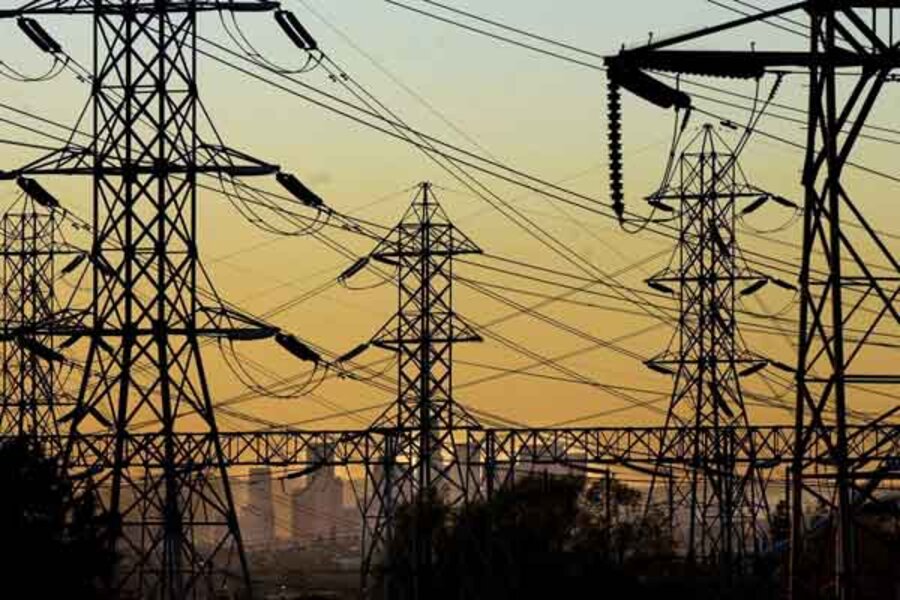Yeah, solar and wind power are nice. But you need the grid to get off the grid.
Loading...
You don't have to invest in solar panels or grow your own shoelaces to leave the grid. Most of us give it a try when we go camping. The first time you finish a plate of campfire chili and turn to face the terrors of an evening without electricity, you get a taste of it.
Sundown means dark. Dark means early to bed. Wonder what Jon Stewart said today? Tent too muggy? Sorry.
Day 1: crunchy. Day 2: better. Day 3: a canteen splash is a perfectly fine substitute for a morning shower. We reset our standards and improvise. By the end of the week, we’re rigging lean-tos and whittling lodgepoles like that “Man vs. Wild” guy. When the power bars and dried soup run low, we might scheme about trapping a rabbit or harvesting ferns for salad – but that’s about as far as it goes. Time to head home, do laundry, and plug in. (Hey, is that a Burger King on the left?)
Going off the grid is a fine aspiration (follow these links for a special Monitor report on the boom in off-the-grid living, including geothermal, wind, solar, and design that fosters sustainability). Going gridless is extreme conservation. At the very least, it eases the burden on power plants and leads the way in techniques for low-impact, green living. But let’s also hear it for the grid. You can’t make a solar panel or a hydropump with hemp and stucco. The grid runs the machines that make our tools, from power-hogging plasma TVs to the windmills of self-sufficiency. And unless you are good at skinning, spinning, and sewing, the grid also provides your clodhoppers and clothes.
The grid is a massive network that delivers 14.02 quadrillion British thermal units of energy a year to Americans, according to 2008 numbers from the US Department of Energy. Put another way... well, actually, there’s no way to simplify that number with a comparison. Just think of everything that draws power night and day for an entire year for the whole United States – every light bulb, toaster oven, office building, hair dryer, machine shop, neon sign, and server farm.
The US grid consumes mountains of coal burned at 1,450 power plants, vast subterranean pockets of natural gas, and the output of 104 nuclear reactors. Modern society couldn’t function without juice – which doesn’t mean we shouldn’t try to do with less of it or even go without it when possible.
But it isn’t always a matter of choice.
Almost 2 billion humans in developing countries have never gotten on a power grid. Reliable electricity would be a boon to them. Even in a rich country like the US, rural areas do without. In the mid-1970s, my friend Mike Rovira and my brother Mark lived for most of a year off the grid while building a cabin in sparsely populated southern Colorado. They would have enjoyed being able to plug in, but no utility companies were running wires in their direction. They never have. To this day, the Rovira cabin runs on a gas generator and solar panels.
When people talk of getting off the grid, they usually mean more than just doing without a meter. They are talking about quitting the whole 21st-century infrastructure: cellphone networks, tap water, cross-continent shipments of arugula, the commute, the 9-to-5. But few people are able to leave it entirely. Take survivalists. They usually don’t have a long-term plan beyond poking their heads up and eating powdered eggs for a few days after some spectacular apocalypse they are sure is coming. They don’t want to go back to nature as much as they want to say, “I told you so.”
Even the Amish don’t separate themselves entirely from the modern world. They eschew power-line electricity, but many use kerosene-powered refrigerators and generators. If they don’t drive, they are still willing to hire cars and vans or ride in trains or buses.
The grid is the infrastructure of society. We trade with one another; watch out for each other; build families, towns, and cities. Utilities connect us. Just as the electric grid should be improved – made more efficient, tapped more frugally – the capital-G Grid needs work. The rat race and rampant consumerism could stand some moderation. Even without solar panels, simple conservation can give you a greener, more sustainable life in the home you live in.
And you can always go camping.
John Yemma is editor of The Christian Science Monitor.





